How to learn to ride a bike as an adult?
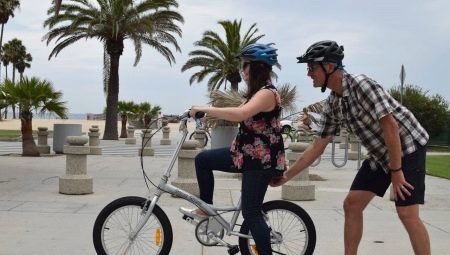
There is an opinion that you need to learn to ride a bike from early childhood. This is fundamentally wrong. This 2-wheeled vehicle can be mastered at almost any age. This article is devoted to how to learn to ride a bicycle as an adult.
Features of training
An adult is hindered from learning to ride a bicycle on his own, first of all, the psychological aspect. Most beginners think about how they will look in the eyes of others. But instructors in special cycling schools will help overcome this psychological barrier.
Some people are simply scared to get on a bicycle, and even more so to ride. But you need to believe that the bike is safe and stable, especially at speed. You only need to help him keep his balance.
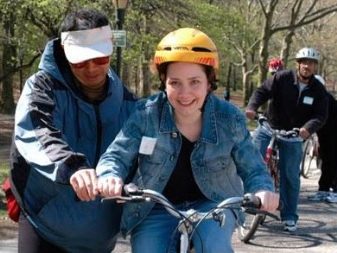
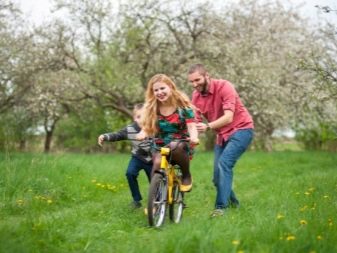
The adult beginner cyclist even has advantages over children - more developed muscles and a better sense of balance. This will definitely help in mastering a technique that is new to you. And remember that if you have a strong desire to learn to ride, you can even in one day. The main thing is to be patient and take the time for this.

Equipment
In order to get started, you need to get the right equipment. And then nothing will interfere with cycling. Choose shoes - not necessarily cycling shoes, but they should be closed and with stiff soles. Clothes should not be too loose... Long sleeves and wide legs can snag on the steering wheel and pedals. Wear gloves - they will protect your hands from blisters and help in case of a fall.
You definitely need a helmet. Even experienced cyclists use it, there is a risk of flying over the handlebars when slowing down quickly.For a beginner, you can buy a closed helmet that protects the ears and chin. Elbow pads and knee pads will also not be superfluous.
Think about glasses. They will protect your eyes from dust and flying gnats. Just choose a high-quality model so that, in case of a possible fall, the debris does not get into the eyes.

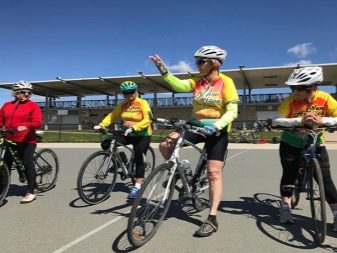
Choosing and preparing a bike
There are single-speed bicycles (road type) and multi-speed bicycles (with derailleurs).
For learning to ride, a model with an open frame is desirable - it's easier to jump off it, if that.
Open frame bicycles are used by both girls and men. Closed frame designs are generally lighter and the top tube can run low and not be inconvenient.

Think about which bike is right for you.
- Single speed. They tolerate falls better, and models with an open frame are more common. Damaging such a bike is more difficult. But they are equipped with a foot brake that can slow down the learning process. In addition, the chain sometimes falls off them, and the cyclist runs the risk of being left without a brake. If you choose such a bike, make sure it is equipped with a front hand brake.
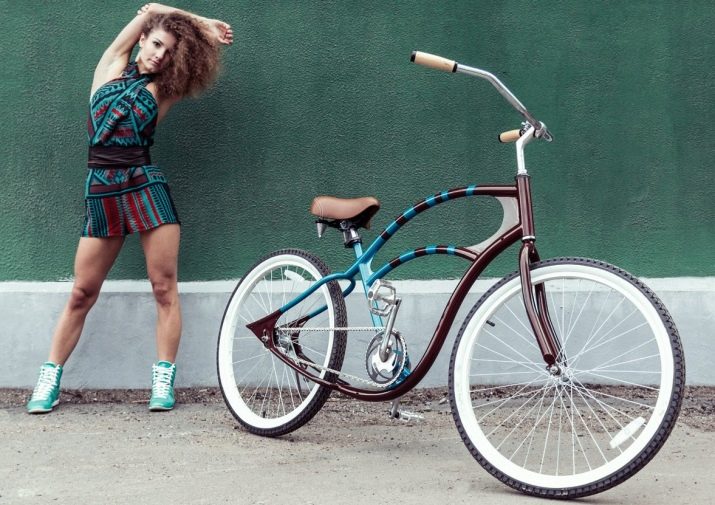
- Multi-speed. You will probably ride such a bike in the future, so learning on it is preferable. They are also equipped with hand brakes to make learning easier. Better to set the speed to medium and not touch any more switches - they will be needed later. If you choose this type of bike, it is advisable to install a rear derailleur guard.
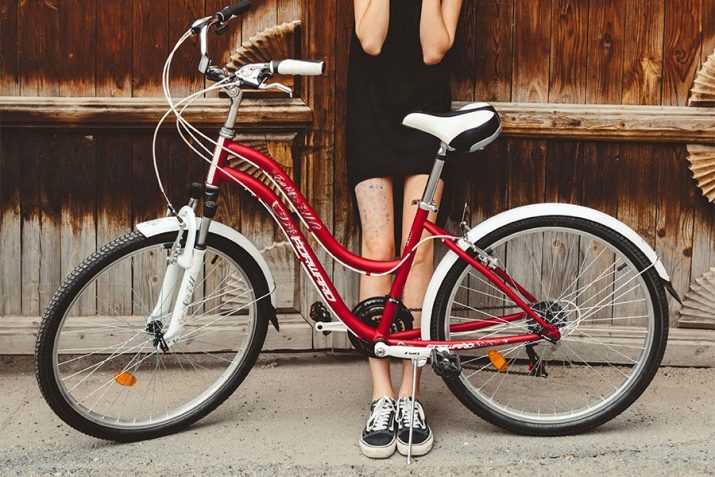
For training, bikes with a planetary rear hub are suitable. They are equipped with multiple speeds, and this type of derailleur is more difficult to damage than usual. Better to set the speed to medium.
Preparing any bike for training is easy.
Check the brakes, inflate the tires, adjust the steering wheel height and angle. Lower the seat so that while sitting on the bike, you can easily reach the ground with your feet. It is advisable to choose wide tires, this will increase stability.
Just don't take road bikes, BMX bikes, downhill bikes or similar bikes. It is difficult to start driving them from scratch, and their cost is quite high.
It is better to remove unnecessary items such as a bike computer, mirrors or a flashlight. They will only distract your attention. They can also be damaged if dropped.

Mastering two-wheeled transport
You can start cycling both in childhood and at the age of 18. And even at 70, it's not too late to study. The tips below will help you get started quickly on a two-wheeler and break down silly prejudices.
- Step 1. Think about the benefits of a bike. You can even write them down on paper so that you can more clearly understand the benefits. You will be able to quickly drive around the city, not depend on traffic jams, keep yourself in shape, improve your health, and have a good time. For a woman, such walks can sometimes replace fitness.
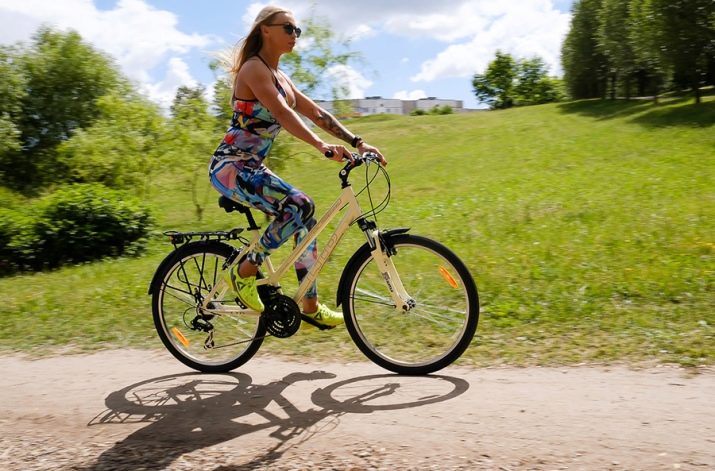
- Step 2. Decide if you need an instructor. You can contact a cycling school or ask a friend to teach you how to ride. Only the trainer does not have to be a daredevil or a beginner. The former will not have the patience, and the latter will not have the experience. If there is an instructor, just trust him. But you can learn to ride a bike on your own, and many people prefer this method.
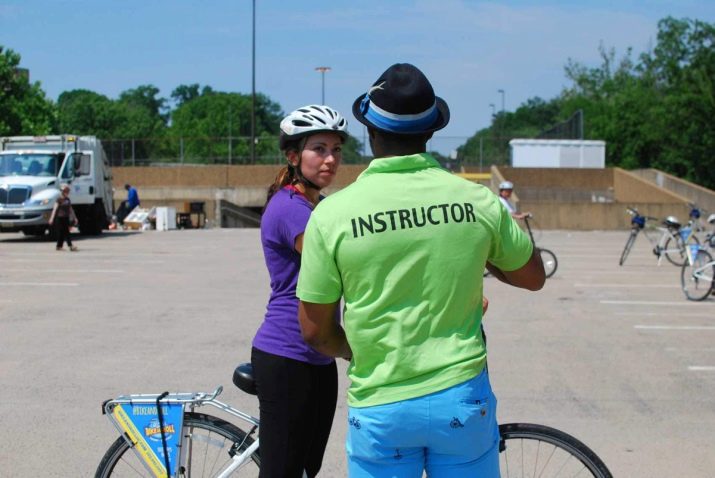
- Step 3. Decide on a place to study. There must be no cars or other obstacles on it. It is also desirable that the site be large, since you will need to practice to unfold. Asphalt under the wheels or rolled earth does not really matter. The main thing is that the surface should not be slippery or dusty. You should not train on loose soil.

- Step 4. Try holding your bike by the seat and not touching the handlebars and ride it straight. This will give you more control over the bike's behavior later on. Remember, bicycles and motorcycles are mainly controlled by tilting, this is due to physics.The steering angle is small even in tight turns.

- Step 5. Sit on the bike, using the handbrake if necessary. Now try to push off the ground with your feet while sitting on the seat, like on a child's scooter. Do this alternately with each leg, and then with two legs at the same time. You need to look not at the front wheel or obstacles, but at the place in which you plan to be. A slightly sloping road is good for this stage. The main thing is not to accelerate too much and balance with your whole body. But you shouldn't go very slowly either: the higher the speed, the higher the stability.
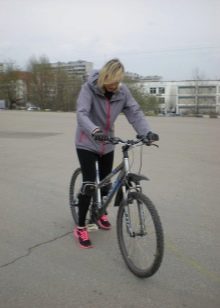
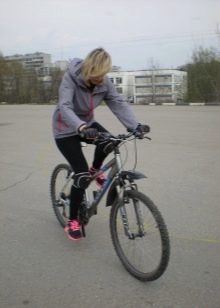
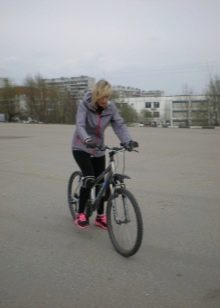
- Step 6... Once you are comfortable with this way of getting around, start using the pedals. To do this, move one of the pedals, usually the right one, to the 14 o'clock position and simply press it. Don't be intimidated by sudden acceleration, just try to keep your balance. This is how both legs should be worked out.
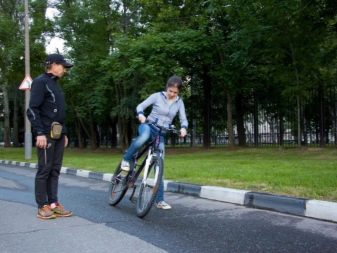
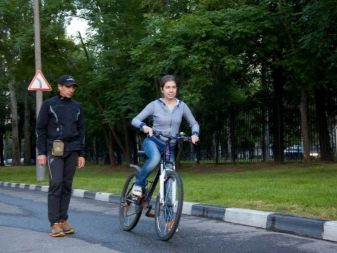
- Step 7. After you've learned how to use the pedals, try to chart a target and drive to it. No need to strain your hands, you just need to keep the steering wheel in the direction. When you get there, congratulate yourself, the training is almost over.
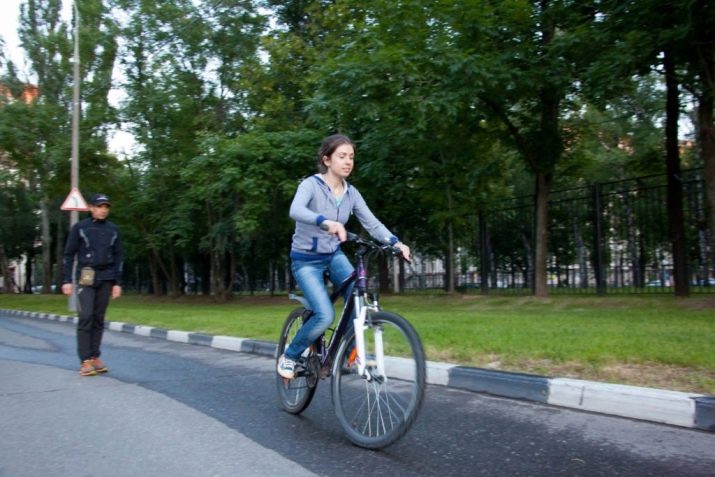
- Step 8. Learn to take turns. To do this, slightly tilt the steering wheel in the right direction and tilt the body slightly in the same direction. Fear not, the movement should be fluid. If it doesn’t work, don’t wag, but stop and try again. When you learn, make a turn with a large radius and gradually reduce it. This is the hardest part, but you are almost there.
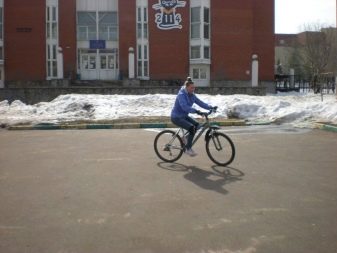
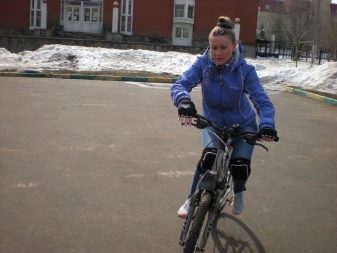
- Step 9. Congratulate yourself. You've learned to ride a bike! Remember this moment, probably one of the happiest.

Now you need to adjust the height of the seat, learn how to use the switches. You can install additional equipment - a computer, mirrors and the rest.
Just remember to practice. To hone your newfound skills, ride as often as possible.
This is especially necessary at first, when the reflex to balance on a 2-wheeled vehicle has not yet been developed.
Now you can safely drive on public roads. It is only highly recommended to know the traffic rules. Start on less busy roads and always drive on the right-hand side only. You need to overcome your fear of cars and not get nervous when a car passes you, even if there is a short distance between you. Be more relaxed about any traffic situation and do not lose your balance.

Now you can set new goals for yourself. Try to ride a snake through objects laid out on the asphalt, turn around with the smallest radius, stop at a given place. Now you can do everything, you have overcome your fear and stupid prejudices. Then learn to ride without hands, lift the front wheel and the rest. These skills can be useful to you even in day-to-day use.
Watch a professional cycling lesson in the following video.









In theory, everything is clear and elementary.